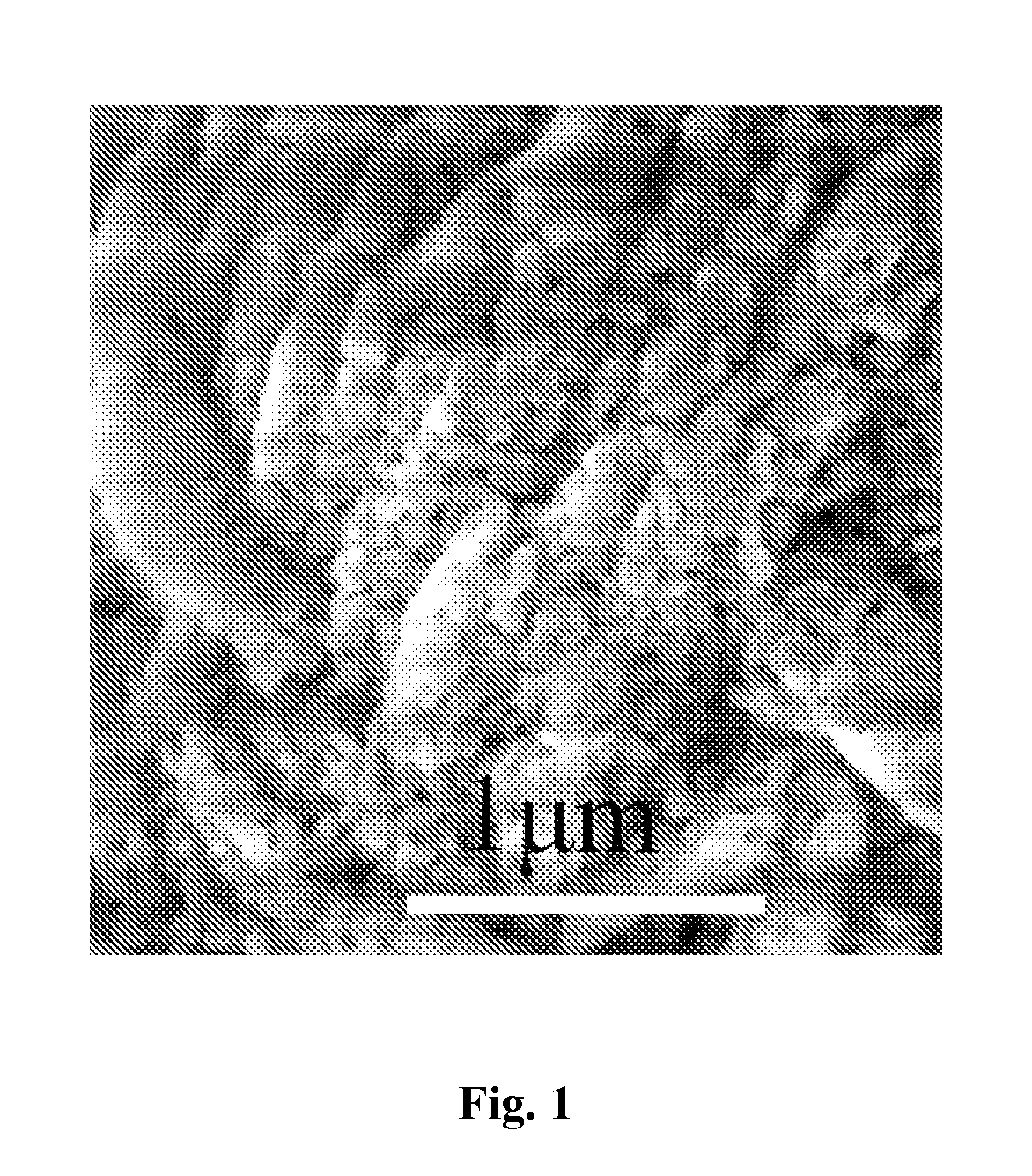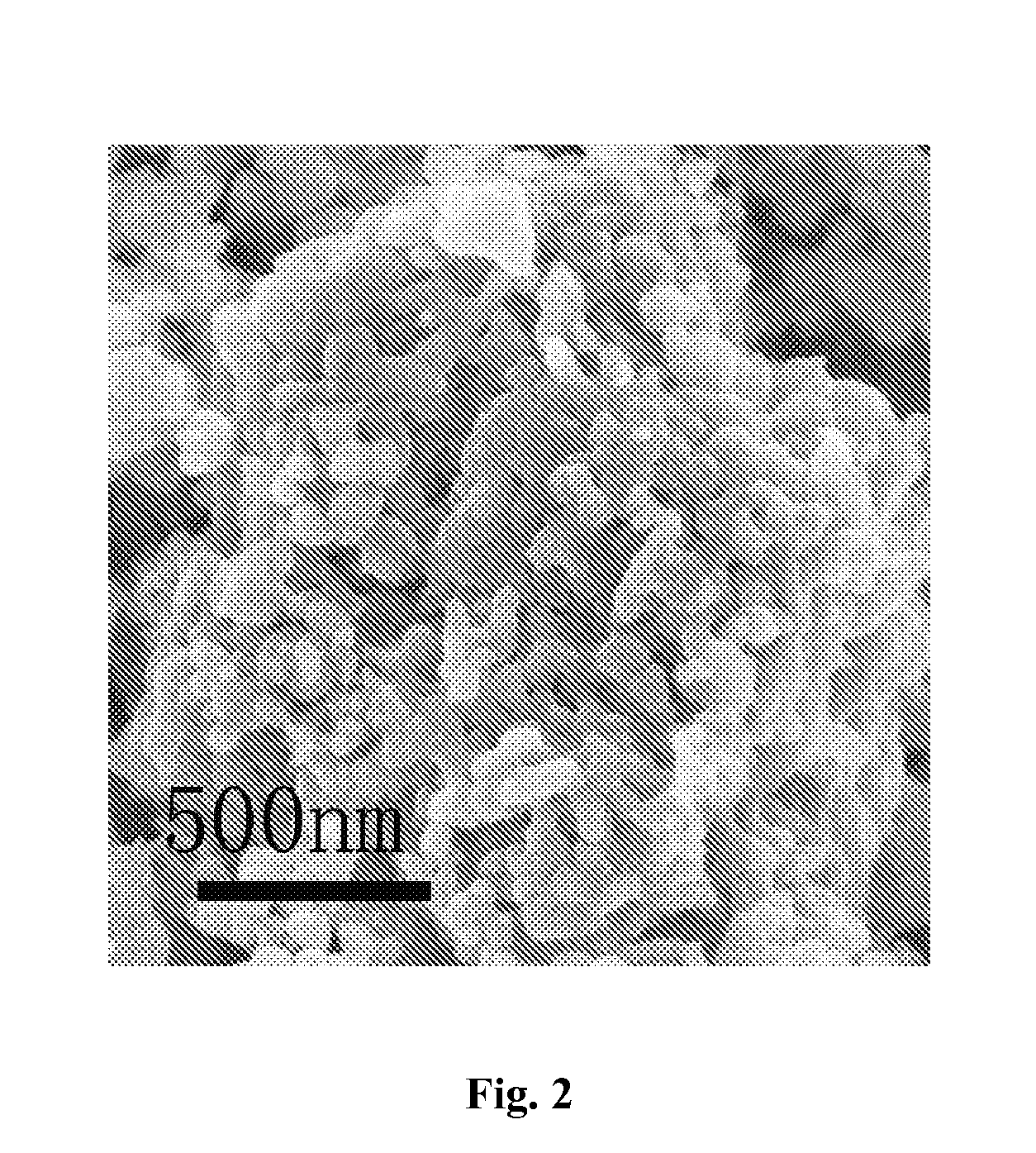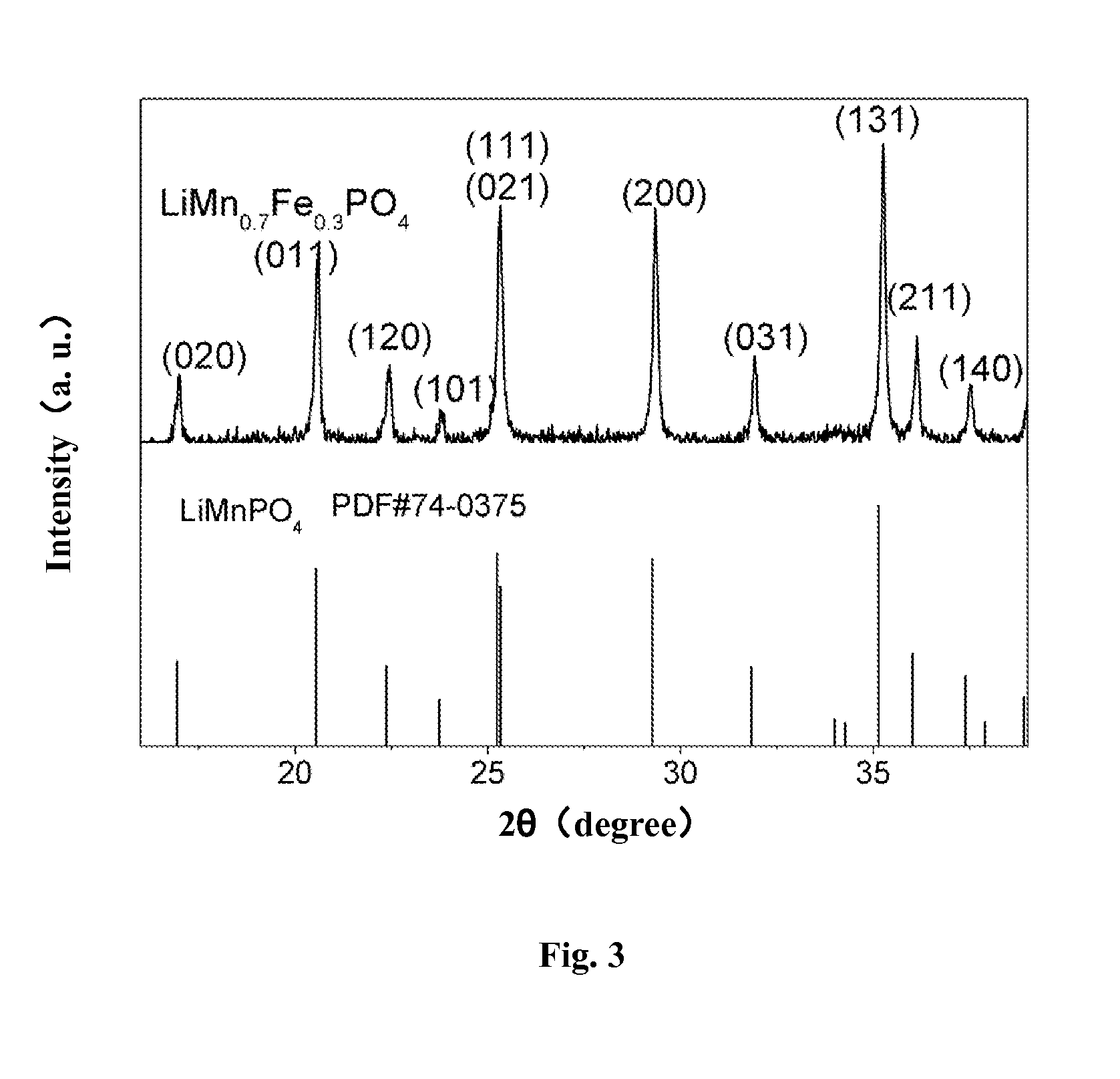Porous Lithium Mangaense Phosphate-Carbon Composite Material, Preparation Method and Application Thereof
a lithium mangaense and carbon composite material technology, applied in the field of lithium manganese phosphatecarbon composite material, can solve the problems of extremely low charge/discharge capacity, low rate performance of batteries, and reduced overall energy density of lifepo/sub>4, and achieves low cost, high specific capacity, and rate performance and tap density.
- Summary
- Abstract
- Description
- Claims
- Application Information
AI Technical Summary
Benefits of technology
Problems solved by technology
Method used
Image
Examples
embodiment 1
[0092]18 mL of 50% Mn(NO3)2 aqueous solution, 20 mL of 85% H3PO4 aqueous solution, 70 mL of ethanol and 20 mL of water are mixed and stirred for 18 h at 25° C. to obtain a MnPO4.H2O material. The MnPO4.H2O material is filtered and dried, and then heat-treated for 10 h at 600° C. under the Ar atmosphere to obtain an intermediate Mn2P2O7. A scanning electron microscope (SEM) picture of a sample is as shown in FIG. 1. It can be seen that primary particles have a size of about 50 nm and are agglomerated together to form micro-spheres, with 5-50 nm of nano-pores formed between the particles. 0.8 g of Mn2P2O7 is mixed with 0.44 g of ferrous oxalate (FeC2O4), 0.39 g of lithium hydroxide (LiO.H2O), 0.28 g of ammonium dihydrogen phosphate (NH4H2PO4) and 0.2 g of polyethylene glycol (PEG), and the mixture is added with 15 mL of ethanol, then ball-milled for 6 h and dried at 80° C. to obtain a second reaction precursor. The second reaction precursor is heat-treated for 10 h at 600° C. in the A...
embodiment 2
[0094]18 mL of 50% Mn(NO3)2 aqueous solution, 20 mL of 85% H3PO4 aqueous solution, 70 mL of ethanol and 20 mL of water are mixed and stirred for 18 h at 25° C. to obtain a MnPO4.H2O material. The MnPO4.H2O material is filtered and dried, and then heat-treated for 5 h at 600° C. under the air atmosphere to obtain an intermediate Mn2P2O7. 0.8 g of Mn2P2O7 is mixed with 0.44 g of ferrous oxalate (FeC2O4), 0.39 g of lithium hydroxide (LiOH.H2O), 0.28 g of ammonium dihydrogen phosphate (NH4H2PO4) and 0.4 g of PEG, and the mixture is added with 15 mL of ethanol, then ball-milled for 6 h and dried at 80° C. to obtain a second reaction precursor. The second reaction precursor is heat-treated for 10 h at 600° C. in the Ar gas flow to obtain a final product, where the structural formula of the lithium iron manganese phosphate material is LiMn0.7Fe0.3PO4. Through measurement by an elemental analyzer, the content of carbon in the composite material is about 4 wt %, and the pore volume is 0.1 cm...
embodiment 3
[0095]18 mL of 50% Mn(NO3)2 aqueous solution, 20 mL of 85% H3PO4 aqueous solution, 70 mL of ethanol and 20 mL of water are mixed and stirred for 18 h at 25° C. to obtain a MnPO4.H2O material. The MnPO4.H2O material is filtered and dried, and then heat-treated for 5 h at 600° C. under the Ar atmosphere to obtain an intermediate Mn2P2O7. 1.42 g of Mn2P2O7 is mixed with 0.4 g of lithium carbonate (Li2CO3) and 0.5 g of glucose, and the mixture is added with 15 mL of ethanol, then ball-milled for 6 h and dried at 80° C. to obtain a second reaction precursor. The second reaction precursor is heat-treated for 10 h at 700° C. in the Ar gas flow to obtain a final product, where the structural formula is LiMnPO4. Through measurement by an elemental analyzer, the content of carbon in the composite material is about 8 wt %. It is measured by a same method as Embodiment 1 that the initial discharge capacity of the cathode material is 30 mAh / g.
PUM
 Login to View More
Login to View More Abstract
Description
Claims
Application Information
 Login to View More
Login to View More - R&D
- Intellectual Property
- Life Sciences
- Materials
- Tech Scout
- Unparalleled Data Quality
- Higher Quality Content
- 60% Fewer Hallucinations
Browse by: Latest US Patents, China's latest patents, Technical Efficacy Thesaurus, Application Domain, Technology Topic, Popular Technical Reports.
© 2025 PatSnap. All rights reserved.Legal|Privacy policy|Modern Slavery Act Transparency Statement|Sitemap|About US| Contact US: help@patsnap.com



